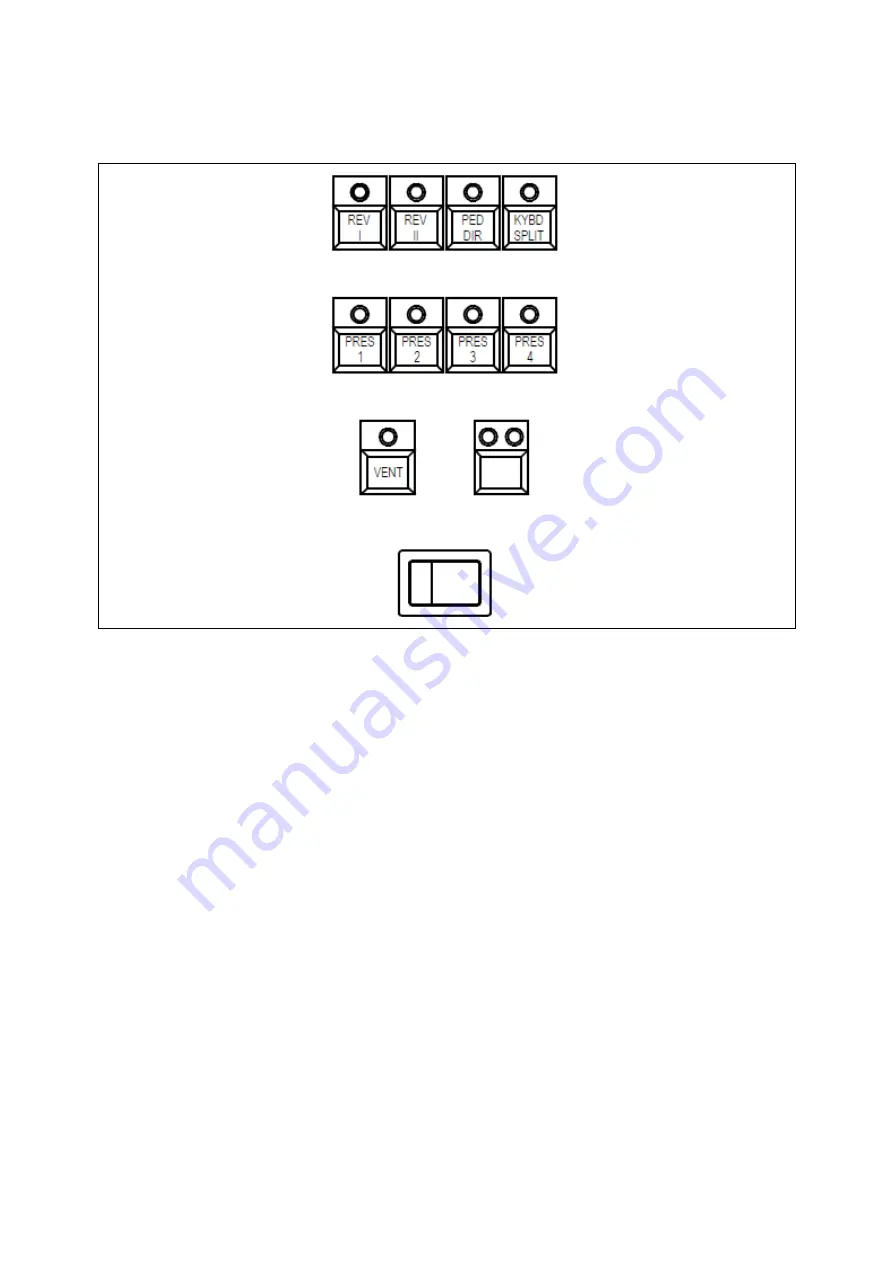
8
The following buttons are located on the end block to the left of the lower manual.
•
REV I and REV II: These buttons select the three available reverb algorithms (I + II = III) for the
Extra Sounds only. The intensity of each algorithm can be set through the external Programmer
Unit or the free Editor software.
•
PED DIR: This button removes the pedal tones from the ROTARY (BAL) R/MONO + L outputs (and
from the Leslie™ interfa
ces if installed). The pedal tones remain available on the SUSTAIN/PEDALS
dedicated output if it has been set for this function through an internal jumper. When the LED is
off, the pedal tones are routed to the ROTARY R + L outputs; when the LED is lit, the pedal tones
are removed from the ROTARY R + L outputs.
•
KYBD SPLIT: The keyboard split function divides the lower keyboard into two parts at notes 25 and
26, allowing the pedal tones to be played from the left part of the lower keyboard. A different
split point can be selected by pressing a key on the lower keyboard while pressing the KYBD SPLIT
button.
•
PRES 1-4: Each of these buttons activates a memorized preset. Besides the four presets that can
be recalled by pressing a single button, up to 11 additional presets (for a total of 15 presets) can
be recalled by simultaneously pressing two, three, or all four preset buttons in any possible
combination. The factory setting initially has the presets associated with 15 Extra Sounds (see
Appendix 1), but each preset can be easily programmed to recall the current configuration of the
organ settings including drawbars, tabs, buttons (excluding the mini VENT controls) and knobs
(excluding ORG and REV) by pressing and holding the relevant button(s) for about 3 seconds, until
all the LEDs in the buttons briefly flash three times to confirm that the preset has been saved.
•
VENT: This button inserts or removes the mini VENT from the signal path. When the LED is lit, the
mini VENT is inserted in the signal path; when the LED is off, the unprocessed signal is assigned to
both L and R/Mono outputs via a true bypass circuit.


































